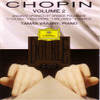Mazurka in A Minor, Op. 68, No. 2 performed by Vásáry (1965)

| | Label: | | Deutsche Grammophon 449313-2 | | Track: | | 21 Track Duration: 2:36 minutes | | Related Performances: | | Afanassiev (2001), Ashkenazy (1981), Bacha (2000), Barbosa (1983), Biret (1990), Brailowsky (1960), Chiu (1999), Clidat (1994), Cohen (1997), Cortot (1951), Csalog (1996), Czerny-Stefańska (1949), Czerny-Stefanska (1990), Ezaki (2006), Falvay (1989), Flière (1977), Fou (1978), François (1956), Friedman (1930), Gierżod (1998), Gornostaeva (1994), Hatto (1993), Hatto (2006), Indjic (1988), Kapell (1951), Kiepura (1999), Koczalski (1928), Kushner (1989), Luisada (1991), Lushtak (2004), Małcużyński (1961), Magaloff (1978), Michałowski (1910), Michelangeli (1941), Michelangeli (1962), Michelangeli (1971), Milkina (1970), Mohovich (1999), Moravec (1982), Moravec (1983), Niedzielski (1931), Ohlsson (1999), Olejniczac (1990), Osinska (1989), Rachmaninoff (1935), Rangell (2001), Rubinstein (1939), Rubinstein (1952), Rubinstein (1961), Rubinstein (1966), Rummel (1943), Shebanova (2002), Śmidowicz (1948), Smith (1975), Sofronitsky (1949), Sofronitsky (1949), Solomon (1946), Solomon (1946), Sztompka (1959), Tomsic (1995), Uninsky (1959), Vardi (1988), Wasowski (1980) |
|
Raw Data
Below are the 5 individual tempo tapping trials for the reverse
conducting of this performance. Click on a
trial number to view the timing data for a particular trial.
Header information from first trial file:
| performance-id | | pid9053-21 |
| title | | Mazurka in A minor, Op. 68, No. 2 |
| trial | | 01/05 |
| date | | 2006/02/12/ |
| reverse-conductor | | Craig Stuart Sapp |
| performer | | Tamas Vasary |
| performance-date | | 1965 |
| label | | Deutsche Grammophon 449313-2 |
| label-title | | Chopin Volume 2 |
| trial-hardware | | Sony Vaio PCG-R505GC laptop |
| trial-cpuspeed | | 1193.084 MHz |
| trial-os | | Windows XP |
| offset | | 455.125 |
The individual trials are combined into a single file for
analysis in Mathematica:
In order to estimate the time offset of the
of the beat tap points in the original audio file, the
following tap time data were extracted manually from the
original audio file:
Analysis Data
Here is the raw analysis file output from Mathematica:
The raw Mathematica output is then formated into a Humdrum file for
eventual linking to the Humdrum **kern data for the score:
The meanings of each column in this file:
- **kern -- The duration of the beat (always a quarter note duration).
- **beat -- The beat number in the measure.
- **time -- The average time in milliseconds that the beat is expected in the original audio file.
- **dur -- The average duration of the current beat until the next beat (in milliseconds).
- **min -- The minimum absolute time at which this beat was tapped over all trials.
- **max -- The maximum absolute time at which this beat was tapped over all trials.
- **cmin -- The 95% confidence for the average minimum time for all taps on this beat.
- **cmax -- The 95% confidence for the average maximum time for all taps on this beat.
- **sd -- The standard deviation of taps around the average abslute time for this tap.
The absolute beat times in the music are extracted from
pid9053-21.avg
and stored
in a plain text file. The following data is useful for generating clicktracks
for the audio recording of the performance.
Next, the offsets analyzed in Mathematica are added to
each individual trial in another combined trial file for use
in further analysis of the individual trials. The average values
of the data in the following file whould give you the average
performance times listed in the above file:
Score Alignment Data
The beat times are first attached to the original score:
Then the times of sub-beats are interpolated from the beat times:
Performance Analysis Data
Finally, the timing information for all individual notes in the score are extracted to a file for use in automatic note identification in an audio file of the performance:
Where the columns represent the following information about a note:
- abstime -- average absolute time in milliseconds of human beats where the note is expected to be in the audio file.
- duration -- expected duration in milliseconds of the note based on score duration.
- note -- MIDI note number of pitch (60 = middle C, 61 = C-sharp/D-flat, etc.).
- metlev -- metric level of the note: 1 = occurs on a downbeat; 0 = occurs on another beat in the measure; -1 = occurs on an offbeat.
- measure -- The measure number in which note occurs.
- absbeat -- The absolute beat from starting beat at 0 for the first beat of the composition.
- mintime -- minimum absolute time of human tapping for this note.
- maxtime -- maximum absolute time of human tapping for this note.
- sd -- standard deviation of human tapping time in milliseconds.
|



